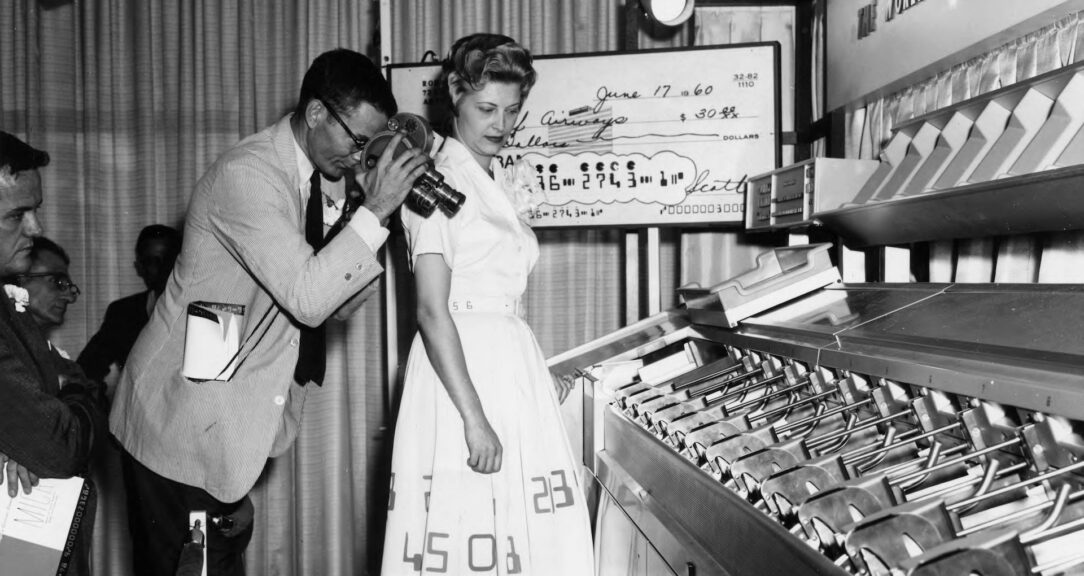For much of the last decade, the word “blockchain” was like financial fairy dust, supercharging businesses’ valuations by giving stakeholders the impression that the organization’s internal processes would magically be more efficient.
And then the crypto winter set in. Prices of bitcoin and other crypto assets plunged, and scandal after scandal hit. Even in less controversial areas of blockchain technology, a number of high-profile experiments in banking and finance have encountered setbacks.
Yet, in this era of digitization, blockchain technology might still be on the verge of mainstream adoption. Blockchain, also known as distributed ledger technology, can be a more efficient way to organize any business processes that involve shared data. But whether it transforms the back office, and how HR and payroll professionals work, is still to be determined. In the end, blockchain might be overshadowed by other emerging technologies such as generative AI.
The buzz around bitcoin
Blockchain technology was originally created to power bitcoin, a pioneering virtual currency designed to allow peer-to-peer payments without the need for third parties, such as banks or governments. Bitcoin promised a number of benefits, including cross-border accessibility, anonymity, and fraud prevention. The lack of third-party intervention means the currency is untaxed and unregulated, which many users consider its best feature — as well as its riskiest.
In the meantime, the underlying blockchain technology emerged as a possible solution for a number of other, less volatile scenarios. Blockchain operates on shared databases called distributed ledgers. When a transaction takes place, the existing block is copied onto a new block incorporating the new data, building on the previous blocks in the chain. The transactions are registered across many computers to protect their integrity.
Blockchain is increasingly being used in a range of enterprise applications that aim to transform the way people and businesses interact with each other. For example, since 2015 there has been increased interest in “smart contracts,” which are programmed to carry out tasks when specific conditions are met, thus removing the need for a trusted intermediary.
But despite blockchain’s promise, a chill has set in following a number of failed experiments. Late last year, IBM and Maersk discontinued a supply-chain blockchain solution developed for the shipping industry, and the Australian Stock Exchange abandoned a project to use blockchain to upgrade clearing and settlement of shares. Earlier in the year, a pair of banking and finance platforms dedicated to adopting blockchain solutions filed for insolvency.
And yet, it might be too soon to write off blockchain all together. A 2020 global survey by Deloitte, which surveyed nearly 1,500 executives, found that 39% of respondents had already incorporated blockchain into production, up from 23% in 2019.
Elizebeth Varghese, a co-leader in Deloitte’s cloud-enabled workforce team, believes that successful adoption will take time, just as the internet did in the 1990s.
“Multiple parties need to adopt technology for it to live up to its ultimate potential,” Varghese says. “Interoperability across different platforms needs to be addressed. We also need terms, identifiers and processes that allow different people and organizations to speak the same streamlined language.”
Reducing the payroll red tape
At its heart, blockchain is a tool to cut down on the red tape that inevitably comes with managing a large organization.
Tasks that are ripe for disruption are those that are slow, labor-intensive and expensive, often because they involve collecting a significant amount of data or working with third parties. When it comes to human resources, recruitment and payroll administration have emerged as two key areas where blockchain could streamline operations.
Varghese points out that blockchain-based solutions have the potential to impact all aspects of hiring, onboarding and payroll. “Employers will have access to a greater field of talent and the tools to help them identify and verify their next best hires,” she says. “Smart contracts delivered through blockchain will replace much of the onerous process of onboarding, especially for high-volume, high-turnover positions.”
Consider, for instance, the amount of time that companies spend verifying the credentials of a candidate applying for a job. To improve their employment chances, applicants sometimes falsify, misrepresent or exaggerate their resumes.
The Risk Advisory Group found in an analysis of 3,000 resumes that 63% contained discrepancies, 35% included inaccuracies regarding employment history, and another 26% had mistakes related to academic background.
As a result, many large companies engage third-party background verification services, while HR departments of smaller companies might not have time to verify resumes.
“With the emergence of the gig economy and the changing needs of employers, I think the recruiting industry will need to change,” said Tashina Charagi, vice president of corporate strategy at ADP. “Technologies like the blockchain will help accelerate that change.”
Simplifying payments
Despite its potential, there are very few examples of large-scale blockchain solutions for improving existing payroll systems.
That’s because it faces a “scalability trilemma,” says Professor V.S. Prakash Attili of the Indian Institute of Management Lucknow. The trilemma is that it’s difficult for a single solution to have decentralization, scalability and security.
“Blockchain systems have at most two of these three properties,” Attili says. “The scalability limitation is mostly applicable to financial transactions and not in the HR management domain, considering the transaction volumes.” It will take time for the technology to improve to the point that it can overcome this limitation, he says.
Wide-scale global adoption will also be required to unleash the benefits of blockchain in payroll. For example, a prime candidate for distributed ledger systems would be international payments, which still involves cumbersome transaction fees. Cryptocurrencies, on the other hand, know no borders. Payments take minutes rather than hours or days, and transaction fees are lower.
However, “The process of paying employees in other countries by removing the middleman when it comes to international payments is unlikely to be touched in the short term due to the need for blockchain to be used globally,” Varghese says.
Is it legal to pay employees in crypto?
In the crypto boom of the past few years, more people became willing to get paid in bitcoin or other popular cryptocurrencies.
In 2021, Francis Suarez, the mayor of Miami, Florida, announced that he would be taking part of his salary in bitcoin. Suarez also launched what he called MiamiCoin, a virtual currency developed in partnership with a nonprofit called CityCoins. He said that 30% of the proceeds would go to the city’s government, in the hopes that it one day might replace local taxes.
But the crypto collapse of the past year has shown that no cryptocurrency or token is safe. Suarez and his MiamiCoin learned this the hard way when the currency lost 95% of its value this year. Bitcoin spiked in value in late 2021, reaching nearly $60,000, before dropping to under $20,000 a year later.
The volatility and lack of regulation raise the question of whether it’s even legal to pay employees their wages in any cryptocurrency. In the United States, the Department of Labor requires all staff to be paid in cash or “a negotiable instrument paid at par.” Whether bitcoin and other coins would be considered “negotiable instruments” is a question that has the legal community divided, with no clear answer.
In 2021, El Salvador became the first country to legalize bitcoin and require all businesses to accept the cryptocurrency. The government even gave the nation’s citizens financial incentives to download a special cryptocurrency. According to the National Bureau of Economic Research, though, more than 60% of early downloaders did not make a transaction after spending the free bitcoin that came with the account. Some of the hesitance was due to technical glitches and fears of asset volatility, but cash was simply considered a superior option.
Revolutionizing the back office?
The less flashy area of banking that blockchain has the potential to transform is the tangled back-office web that interfaces with an exhausting number of intermediaries to ensure that a vendor, client or employee is paid.
Global trade operates largely on the same principle today as it did in the 17th century, when the merchants of the British Empire accepted documents describing the value of goods to extend credit to traders and settle invoices.
An exporter today still receives a bill of lading detailing what goods were shipped and where. The exporter adds the invoice and customs forms and sends all the documents to a bank that issues a letter of credit. All the documents are checked again by the buyer’s bank before payment is released.
Blockchain technology has the potential to simplify that exchange of documents. In 2017, ING and Societe Generale conducted an experiment where they used a blockchain process to track the ownership of crude oil that was sold three times while en route to China. The platform allowed the oil exporter and ship owners to upload data, inspectors to confirm quality, and insurers to issue cover for cargo.
According to Societe Generale, the amount of time that the bank spent checking each transaction went from three hours to just 25 minutes, and traders saw their efficiency rise by 33%. This was possible because settlement is instantaneous on the blockchain, where a shared ledger ensures all parties have equal and simultaneous access to the data. But the lack of uniform, industry-wide standards has largely kept these experiments from going mainstream.
“What we see with high-profile blockchain experiments is the issue of organization-specific blockchain platforms rather than one universal blockchain software system,” says Varghese. “The use and extensive adoption of any technology takes time. We need to set standards that are implemented — not just among the organizations one company interacts with but across national and international boundaries.”
All of this suggests that while blockchain solutions promise a more efficient way of doing business, the path it takes to replace existing systems will be gradual. In the meantime, perhaps a new, buzzier technology — such as generative AI — will surge ahead. Either way, payroll professionals will be watching.
Read more
Sign up to keep up to date with ReThink Q.








